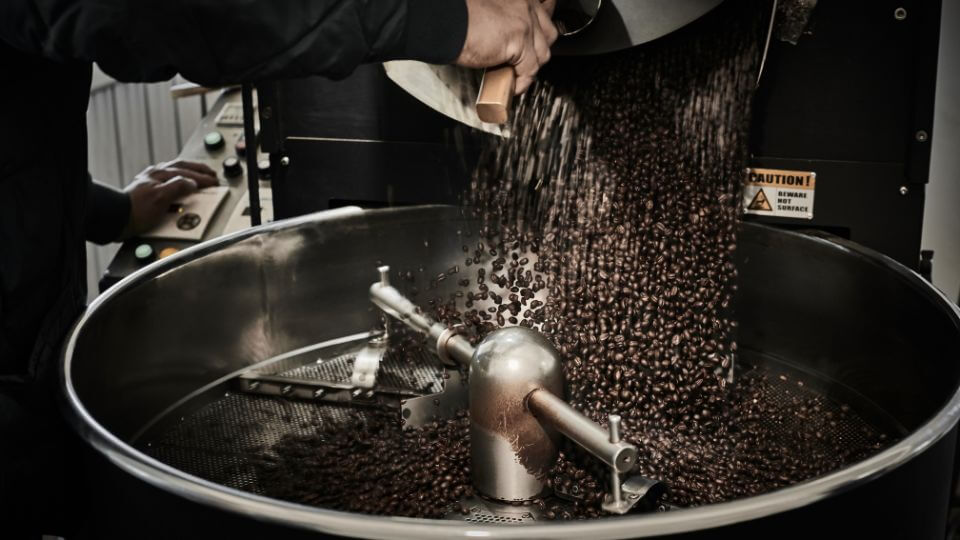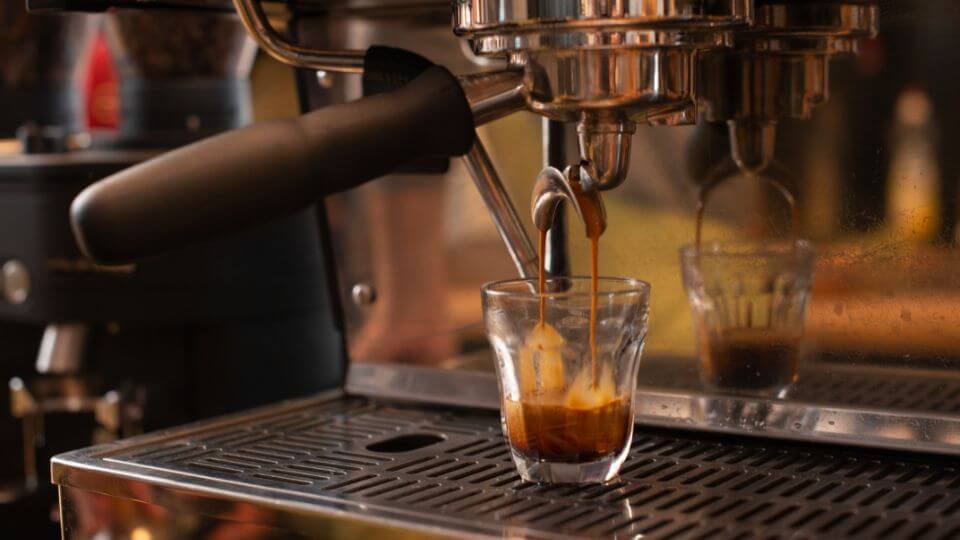In this blog post, I’ll jump into the reasons behind the burnt taste in your espresso and provide some solutions to help you enjoy the rich, smooth, and bold flavor that you’re truly after.
What Does Burnt Espresso Mean?

Burnt espresso refers to a taste that occurs when something has gone wrong in the brewing process, giving the espresso an unpleasant, burnt flavor.
This can be caused by various factors such as over-extraction, burnt beans, or incorrect brewing methods.
Over-extraction is the most common cause of burnt-tasting espresso, which can result from using too fine grind, too hard tamp, or too much coffee in the brewing process.
Is Espresso Supposed To Be Burned
No, espresso is not supposed to be burnt.
A well-prepared espresso should have a strong aroma, substantial body, and a solid crema, without any burnt or bitter taste.
Burnt-tasting espresso is usually a sign of over-extraction, which occurs when hot water moves through the coffee grounds too slowly, resulting in a bitter and burnt taste.
This can happen if the coffee grind is too fine or if the basket is overfilled with coffee and tamped excessively.
It is also not recommended to drink burnt espresso, as it has an unpleasant taste and can be more acidic than freshly brewed coffee, potentially causing stomach irritation or nausea.
Why Does My Espresso Taste Burnt? (and How To Fix It)
Alright, let’s talk about some of the common factors that can lead to that burnt taste in your espresso:
Coffee Beans
First things first: the coffee beans.
They’re the heart and soul of your espresso, so you want to make sure you’re using top-quality beans to get the best flavor possible.
When it comes to the freshness of your beans, you’ll want to use them as soon as possible. Ideally 3 days after roasting, but some people recommend waiting up to 14 days.
As beans age, they lose their flavor, and this can lead to a dull or burnt taste. So always keep an eye on the roast date.
Next up is the roast level. The roast can definitely affect the flavor of your espresso, and I’ve learned this the hard way.
Darker roasts tend to have a more intense, bold flavor, but it’s easy to over-roast it.
Last but not least, let’s talk about storage. It might not seem like a big deal, but trust me, how you store your beans can have a significant impact on their taste.
Keep your beans in an airtight container, away from direct sunlight, heat, and moisture. This will help preserve their freshness and prevent that dreaded burnt flavor from creeping into your espresso.
Your Coffee is Over Roasted

As I mentioned a bit earlier, over-roasted coffee beans can be a major issue with low-quality beans.
You see, different roast levels bring out varying flavors in coffee. For example, Italian roast coffee beans, which have a unique smoky flavor, are perfect for espresso.
However, when beans are over-roasted, they can taste extraordinarily bitter and become almost unpalatable.
So, how do you spot burnt coffee beans?
Look for patches of darker color and inconsistency in their appearance.
These burnt beans will have a charred, blackened look compared to the rest of the bag.
Inconsistency during the roasting process can cause some beans to burn while others remain uncharred. This is often due to low-quality control in coffee companies, resulting in burnt beans mixed with well-roasted ones.
From my experience, the best way to avoid over-roasted coffee beans is by purchasing quality coffee from a company that truly cares about the integrity of its products.
The Grinding Process is Off
Now, let’s move on to the grinding process. I’ve discovered that finding the right grind size is like finding the key to unlocking amazing flavors. Let me tell you more!
The grind size plays a significant role in the extraction process, as it affects how quickly the water flows through the coffee grounds.
For espresso, you’ll want a fine grind, which helps create the right amount of resistance for the water to extract all those delightful flavors.
But be careful, too fine a grind can cause over-extraction, leading to a bitter or burnt taste.
Another issue that can cause a burnt taste in your espresso is an uneven or inconsistent grind.
If your coffee grounds are not uniform, the water won’t flow evenly through them, leading to uneven extraction and a less-than-perfect shot.
I’ve found that investing in a good-quality burr grinder has made a world of difference in the consistency of my grind, and ultimately, the taste of my espresso.
Let me tell you more about it.
Friction from Coffee Grinder
Coffee grinders can generate heat from friction, which can cook the coffee beans. And when that happens, you guessed it, burnt-tasting coffee.
The friction caused by grinder blades and burrs can cook already roasted beans, ruining their flavor.
Through my experience, I’ve noticed that blade grinders create more friction than burr grinders.
And guess what?
Faster grinders generate even more friction than slower ones!
So, what can we do to avoid that burnt taste?
The answer lies in pulsing your coffee grinder instead of grinding continuously. By doing this, you give the heat caused by friction a chance to dissipate before it can cook your beans.
Trust me, it makes a huge difference!
If you’re looking to minimize friction while still getting that fine, uniform grind perfect for espresso, I’d recommend using a conical burr grinder.
Water Quality and Temperature
You might not realize it, but the quality and temperature of your water play a huge role in the taste of your espresso.
First up, water quality.
Did you know that espresso is around 98% water? That’s why using good-quality water is so important. If your water has impurities or an off taste, it’s going to affect your espresso’s flavor.
I recommend using filtered or bottled water to make sure you’re getting the best taste possible.
Now, let’s discuss water temperature.
The ideal temperature for espresso extraction is between 197°F and 205°F (92°C and 96°C).
If the water is too hot, you’ll risk over-extracting your coffee and end up with a burnt taste.
On the other hand, if the water is too cold, you’ll under-extract your coffee, leading to a weak and sour shot.
I’ve found that using a thermometer or an espresso machine with built-in temperature control is super helpful in maintaining the right water temperature.
Espresso Machine Maintenance

Last but definitely not least, let’s talk about espresso machine maintenance.
It’s no secret that keeping your machine in tip-top shape is essential for brewing delicious espresso. After all, a clean machine is a happy machine!
Regular cleaning and descaling are crucial to maintaining your machine’s performance and ensuring consistently great-tasting espresso.
Over time, coffee oils and minerals can build up inside your machine, leading to off flavors and even machine malfunction.
I make it a point to clean my machine regularly and descale it every few months, depending on the hardness of my water.
But don’t worry, taking care of your espresso machine doesn’t have to be a chore. Most machines come with instructions for cleaning and descaling, and there are plenty of products out there to help you get the job done.
Just make sure you follow the manufacturer’s guidelines, and your machine will stay in excellent condition.
Summary Table for Quick Reference
| Factors | Reasons | Troubleshooting Techniques |
|---|---|---|
| Coffee Beans | Quality, freshness, roast level, storage | Use high-quality beans, check the roast date, and store them properly |
| Grinding Process | Grind size, consistency | Use a fine grind for espresso, invest in a good-quality grinder |
| Friction from Grinders | The heat generated by friction | Pulse the grinder, use a conical burr grinder |
| Water Quality and Temp. | Impurities, incorrect temperature | Use filtered/bottled water, and maintain temp. between 197-205°F |
| Over Roasted Coffee Beans | Inconsistency in roasting | Buy from reputable brands, and avoid beans with dark, charred patches |
| Espresso Machine Maintenance | A build-up of coffee oils and minerals | Regular cleaning and descaling, following manufacturer’s guidelines |
Some Questions You May Have
How to not burn espresso?
To prevent burning your espresso, follow these key steps:
- Choose high-quality, freshly roasted beans for a better flavor profile.
- Use the correct grind size for espresso – it should be fine, but not too fine, to avoid over-extraction.
- Monitor your water temperature – the ideal range is between 195-205°F (90-96°C) for optimal extraction.
- Ensure proper maintenance of your espresso machine, including regular cleaning and descaling.
- Experiment with extraction times and make adjustments as needed to find the sweet spot for your particular beans.
Why does my espresso smell burnt?
If your espresso smells burnt, it could be due to a few factors:
- Over-roasted coffee beans: Beans that are roasted too dark can result in a burnt aroma in your espresso.
- Over-extraction: If the grind size is too fine or the extraction time is too long, your espresso may smell and taste burnt.
- Water temperature too high: Using water that’s too hot can scorch the coffee grounds, leading to a burnt smell.
My Final Thoughts
To sum up, we’ve explored several key factors contributing to a burnt taste in espresso, including the quality and freshness of coffee beans, the grinding process, water quality and temperature, and regular espresso machine maintenance.
Remember, selecting high-quality beans, perfecting your grind, monitoring water quality and temperature, and maintaining your espresso machine are all essential steps to achieving a delicious espresso.
Don’t hesitate to experiment with different beans, grind sizes, and extraction techniques, as refining your approach can significantly enhance your espresso’s flavor.
Keep pushing your coffee-making boundaries and continue learning from your experiences.


